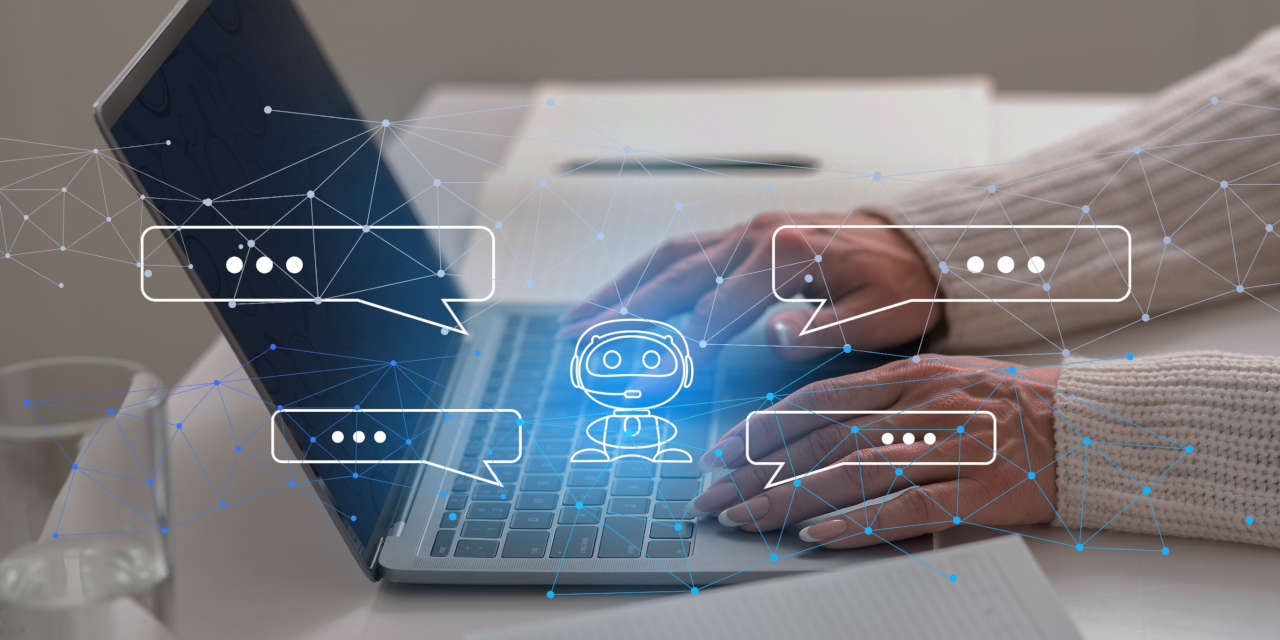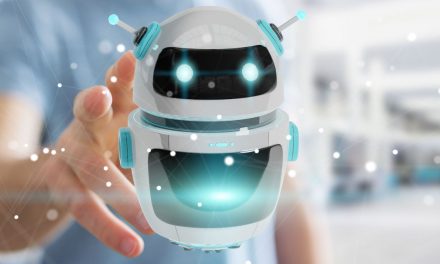By Leigh Ann Hubbard
I’m in a United Airlines lounge in Chicago.
A short, repetitive melody softly plays. Ambient music? Weird choice.
The melody’s volume grows. I glance up.
A robot carrying bins stops at the table in front of me, where a man and woman sit, having finished their snack.
It stands there, playing that tune, staring at them. It has no face.
The people realize it must want something. They load their dishes into the bins.
Two other people stop beside my table. They need to get by the robot, which is blocking the aisle.
The five of us watch, waiting.
Given our fascination, I’m thinking none of us has seen a robot like this in the wild before. I saw some at a conference but not at work in a dining room.
It spins around. Clockwise, counterclockwise. It’s confused. Will it stay? Will it go? Will it run smack dab into the people it’s blocking?
Finally, it pipes up: “Excuse me.” Its voice is soft and calm.
“Yes?” the woman at the table answers.
“Excuse me,” it says again.
She realizes her carry-on is blocking its foot. She moves her bag.
The robot rolls away.
I laugh. The women looks over her shoulder at me.
“Well, that was something,” I say.
Ten Minutes Later
“Excuse me.” A heavy foreign accent. A friendly smile. She doesn’t seem comfortable speaking English. She asks with her eyes and body language whether she can take my plate.
She takes my dishes and goes to the next table — the one the robot had visited. The people have gotten more snacks.
They don’t look up from their computers as she silently picks up their dirty plates.
The In-Between
We are living in the in-between. AI and robots are poised to change society. Will it be a subtle shift or a seismic one, like what email and social media have done?
It reminds me of times your residents must have seen. They witnessed the advent of the trappings of our modern world.
Were they hopeful? Trepidatious? Inspired? Worried? Indifferent? Can we learn anything from where they’ve been?
What if you captured these stories? What an interesting project that could be for life enrichment and marketing.
20th Century Life Changers
You could pick one thing or multiple — and ask about events or inventions. For example, people who are 90 years old today were approximately (depending on their birth month) …
- 12 years old when World War II ended in 1945
- 21 when the Civil Rights Movement started in 1954
- 36 when Neil Armstrong and Buzz Aldrin landed on the moon in July 1969
- 36 when the Vietnam War draft started in December 1969
You could ask about their experiences with these events or frame it around how your town changed at that time — if they grew up there.
Here are some interesting 20th Century inventions. (The years are when they became widespread, not invention dates).
- Television (1950s)
- Frozen meals (“TV dinners,” 1950s)
- Vaccines for polio (1950s) and measles and mumps (1960s)
- Color television (1960s and ’70s)
- Microwave (1970s)
- Ultrasounds for pregnancy (1970s)
- Word processors (1970s and ’80s)
- Personal computers (1980s)
What other events and inventions would you add? If you start capturing these stories — or have already done so — please let us know!








